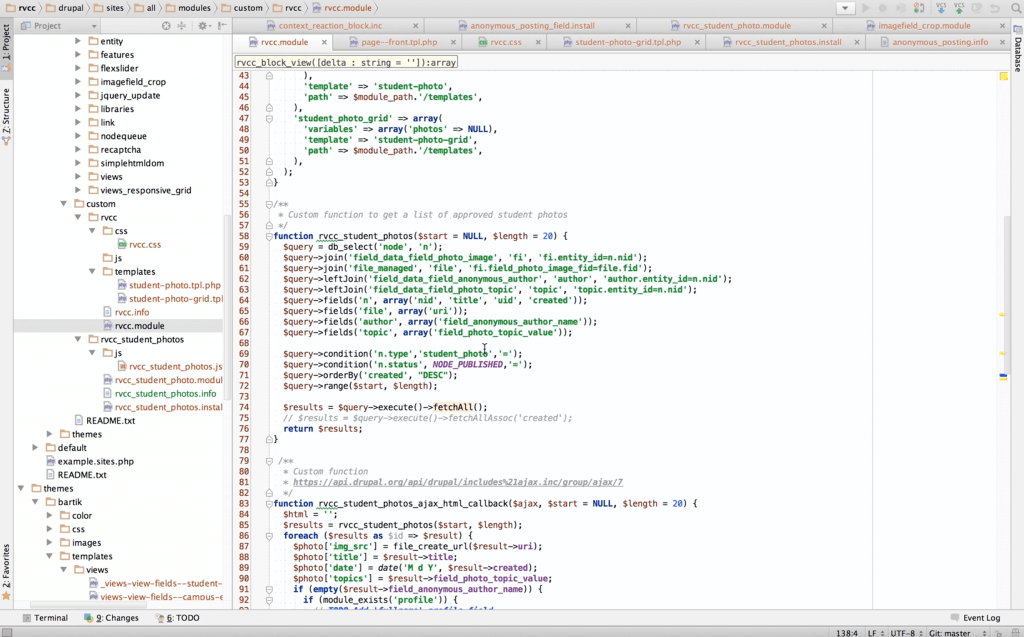According to BuiltWith.com, Drupal CMS comprises 9% of the top 100,000 websites. Across the board, Drupal is consistently one of the top 3 content management systems used today.
What is Drupal? Why is it so popular? Is it the right choice for your business or organization? Read on to learn the facts.
![]()
What is Drupal CMS?
Drupal.com defines Drupal as “a scalable, flexible platform for any organization to innovate in a fast-changing digital world — to create and manage web content and engaging digital experiences.” But what does that mean? Let’s break it down.
Drupal is an open source content management system (CMS). A content management system is a platform used to manage a website’s content. This requires minimum help from IT or developers, allowing for non-technical users, such as a marketing team, to update an organization’s website quick and easy. Other popular CMS’s you may have heard of are WordPress and Joomla. However, Drupal CMS is frequently credited for having the most technical community of developers working on it.
In total, Drupal powers more than a million websites worldwide. These are enormous, enterprise sites with consistent, high traffic like General Electric and Pfizer, as well as websites with extreme bursts, such as the GRAMMY Awards and the Olympics. It is also used for smaller and mid-sized businesses.
Drupal History
Let’s start from the beginning.
Here’s a quick, condensed timeline of how Drupal CMS has become one of the most popular web design and development platforms today:
 1999: Dries Buytaert begins the Drupal software as a message board.
1999: Dries Buytaert begins the Drupal software as a message board.
2000: Interest and contributions continue to grow. As a result the project is made open source.
2001: Drupal.org is officially launched.
2005: The Drupal community begins to gain momentum, with several “code sprints” and conferences such as Drupalcon.
2011: Drupal 7 debuts
2014: Drupal 8 is released in beta
Drupal Community
As mentioned above, Drupal is an open source CMS. What this means is that the source code is available for anyone who would like to study, alter and customize it.
The Drupal development community is comprised completely of users who contribute their applied, real-world solutions back to the community voluntarily. Drupal’s open source community is believed to be the most technical out there, allowing for the CMS platform to become one of the most robust and advanced offered today.

Drupal Features
Drupal has many features that makes it one of the most innovative CMS’s out there today. Let’s just say there’s a reason GE, Pfizer and the GRAMMYs have all chosen it to for their website design and development initiatives. So what are some of the most noteable?
Responsive Web Design
Drupal CMS is mobile responsive. Everywhere. On every device.
Since Google rolled out their mobile-friendly update is April 2015, having a mobile responsive web design isn’t just a bonus, it’s a necessity. Drupal allows for an extremely customizable front end ensuring that your website design is completely mobile-friendly.
Integrate with Other Technologies
Drupal development is compatible with other technologies, such as marketing automation and CRM, allowing for your site to go far beyond statically providing information. Using Drupal business, colleges, government organizations and many more create powerful sales and marketing tools that fully utilize a company’s greatest asset: its website.
Web Security on the Drupal Platform
The Drupal Security Team, made up of dozens of experts, handle security issues and updates. They also release advisories to the Drupal community to explain possible vulnerabilities along with directions on how to protect your responsive website from threats.
In addition to an industry-leading security team, Drupal CMS offers varied password policies that can be defined by you. You can set minimum length, complexity and expiration dates.
Drupal as a Content Publishing Platform
While Drupal wins in the technical category, it can be seen as a bit difficult for the non-developer. Don’t get us wrong, it is still extremely user-friendly (the Drupal community has made that a top priority in recent years), but it does take a bit more getting used to than its competitors like WordPress.
That doesn’t mean that once you get the hang of it Drupal CMS doesn’t deliver in customized content publishing features.
Drupal provides mobile editing, allowing for users to create, edit and publish content on the go. Assigned roles, such as author or editor, also allow for easy workflow, all within the backend of your responsive website. Drupal also has impressive granular tagging that allows for structured website content. When it comes to publishing content, Drupal is a CMS you want to be working on.
Manage multiple websites
One feature that has led to Drupal’s popularity with large corporations and world-renowned universities is its seamless ability to manage multiple sites across an organization from one single platform.
For a university, such as Stevens Institute of Technology in Hoboken, NJ, this is vital as they need to manage multiple microsites and subdomains to reach and provide information for multiple personas and departments.
Who uses Drupal?
If you make the switch to a Drupal website design you will be in good company with small to mid-sized businesses, global corporations and the world’s top universities. Some of the most notable are:
Harvard, The Weather Channel, The Economist, NBC, Whitehouse.gov, Amnesty International, NYC Metropolitan Transportation Authority, Oxford, and many more.

Interested in learning more about Drupal? Check out some of our other blogs:


